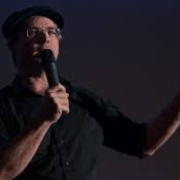The New Yorker makes me hungry.
At the hottest time of the year, in 2021, the hottest accessory to wear was the now-classic New Yorker tote bag. (I first learned about it in 2021, anyway; it’s apparently been a thing since at least 2014.) Gen Z girls and gays hoisted those sandpaper-cotton stripes over their shoulders — perhaps hoping to display to the public a sort of performative intellectualism, a walking advertisement blaring, “Yes, I am also subscribed to one of the most established American magazines, and totally not just because the subscription came with a free tote.”
Well, anyway, the ad worked on me. I bought myself a New Yorker subscription — closing my eyes to ignore the $120 annual price tag. I got my tote, which I used a couple of times (and then put in the wash, only to discover it had completely shriveled up). But I actually did start reading the articles, too. In a few months, I found myself looking forward to Susan Glasser’s “Letters from Washington,” or Jay Caspian Kang’s uniquely sharp and thought-provoking columns, or the occasional bomb from Ronan Farrow. I’d be puzzled by the quirky, often nonsensical style choices: “focussed”; “teen-ager” (with the hyphen); the refusal to write round numbers numerically, even large ones, with the exception of years; the treatment of double vowels, e.g., “reëlection.” It was a whole new world, constantly expanding, always with more to find.
I started reading The New Yorker while eating. Breakfast, lunch, dinner, it didn’t matter. I’d chow down on a Cafe Dulce breakfast burrito while reading about the dangers of gene editing, or the latest in Donald Trump’s legal debacle. I’d often be so enraptured by an article that I wouldn’t realize I’d already finished my meal until half an hour later.
So it came to be that the other day, I opened the New Yorker app on my phone, and I immediately heard my stomach growling.
I myself have become a walking advertisement for that magazine, in an entirely different sense than the tote trend. When I was news assignments editor, I encouraged writers to read its articles for inspiration. Given the opportunity, I could probably talk about The New Yorker for hours — possibly forever, however long that is.
I’ve spent a lot of time thinking about what draws me so closely to the magazine. Surely there must be some magical quality that compels me to read, in one sitting, an article longer than most books I’ve read for class. (Matthew Aldridge, a professor of mathematics at the University of Leeds, compiled a nonexhaustive list of The New Yorker’s longest articles by word count; some entries are over 90,000 words and have since been published as standalone books.) It wasn’t the subjects of said articles, which, though (usually) centered around New York or the United States, are otherwise unfathomably diverse; it wasn’t the rigorous fact-checking and copyediting — but rather something far more simple.
By the format’s very nature, a magazine can do what most straight-arrow print news publications can’t: tell a story, from start to finish.
I am aware that hard-news stories, too, offer compelling narratives. But those narratives, by necessity, are centered on the news itself, applying the immediate news to broader contexts, and therefore justifying its timeliness and relevance. But magazines have no such obligation; a writer can instead delve deeper into the people behind those stories — following them for months, even years, to leave no detail unwritten — or lay out comprehensive histories of phenomena, or arguments for (or against) societal change.
A particularly striking example that comes to mind is Ta-Nehisi Coates, who, in the course of two years, wrote a 16,000-word essay titled “The Case for Reparations,” published in The Atlantic in 2014. The piece was groundbreaking, winning multiple awards and influencing legislation at every level of government. (Sen. Cory Booker, among others, introduced reparations bills to Congress after the fact; California and San Francisco are actively exploring paying reparations to Black residents.) It now has its own Wikipedia page.
Until now, the Daily Trojan has not really had a space to write those longer, in-depth stories that can reverberate regardless of their “timeliness” or “relevance.” It seemed to me, in my semester as news assignments editor, that many of our writers were indeed itching for such a space to exist. I, myself, yearned for something of our own akin to The New Yorker, or The Atlantic. Of course, with our limited budget and already hectic schedules as college students, we don’t pretend to be anywhere near that level of quality; but we could certainly try.
So consider this our attempt. My sincere hope is that you, the reader, find reading these articles as entertaining and enrapturing as I did in editing them, and in reading those publications which have influenced this one in front of you. It would be my greatest accomplishment if the Daily Trojan Magazine could, one day, make you hungry, too.









